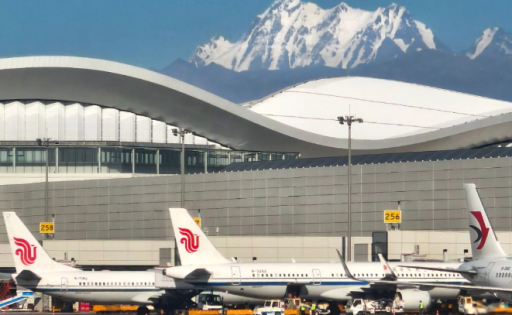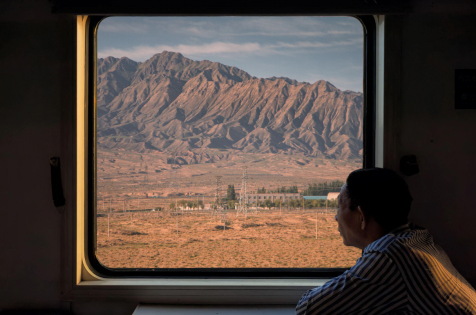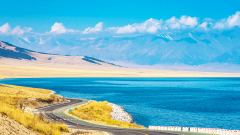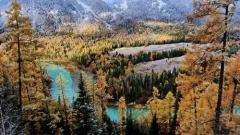Located in China’s far northwest, Xinjiang Uyghur Autonomous Region is one of the country’s most fascinating destinations—famous for its deserts, snow-capped mountains, Silk Road towns, and ethnic diversity. But because of its vast size and remoteness, many travelers wonder: how exactly do you get there? Whether you’re flying in from another country, taking a scenic train across China, or driving along historic routes, this guide explains all the main ways to reach Xinjiang safely and efficiently.
Flying to Xinjiang: The Fastest Way
Flying remains the most convenient and time-saving option for reaching Xinjiang, especially for travelers coming from eastern or southern China.
Major Airports in Xinjiang
-
Urumqi Diwopu International Airport (URC) – The main gateway to Xinjiang, located in the capital city, Urumqi.
-
Kashgar International Airport (KHG) – Serves southern Xinjiang, close to the ancient Silk Road hub of Kashgar.
-
Altay Airport (AAT) – Gateway to northern Xinjiang and scenic destinations like Kanas Lake and Hemu Village.
-
Korla, Aksu, and Hotan Airports – Smaller regional hubs with connections from Urumqi and major Chinese cities.

Urumqi Diwopu International Airport
Domestic Flights
Xinjiang is well connected to China’s major cities. From:
-
Beijing → Urumqi: ~4.5 hours
-
Shanghai → Urumqi: ~5 hours
-
Chengdu → Urumqi: ~4 hours
-
Xi’an → Urumqi: ~3 hours
-
Lhasa → Urumqi: ~3.5 hours
You can also find direct flights to Kashgar, especially from Urumqi, Xi’an, Chengdu, or Chongqing.
International Flights
Urumqi has limited international routes to Central Asia and Russia, including:
-
Almaty (Kazakhstan)
-
Bishkek (Kyrgyzstan)
-
Tashkent (Uzbekistan)
-
Moscow (Russia)
These routes make Urumqi a key hub for cross-border Silk Road travel.
Pro Tip: Book domestic flights early if traveling during China’s national holidays (especially Golden Week or October). Flights fill up quickly due to increased tourism.
Reaching Xinjiang by Train: Scenic and Affordable
For travelers who enjoy slow travel and landscape views, the train journey to Xinjiang is one of the most spectacular in China.
High-Speed Train Routes
In recent years, China’s rail network has expanded westward, making Xinjiang more accessible than ever.
-
Xi’an → Urumqi: ~13 hours
-
Lanzhou → Urumqi: ~11 hours
-
Zhengzhou → Urumqi: ~18 hours
-
Beijing → Urumqi: ~30 hours
The Lanzhou–Urumqi High-Speed Railway (Lanzhou-Xinjiang line) offers modern, comfortable trains that pass through deserts, mountains, and vast grasslands.

Classic Rail Journey: The Silk Road Route
If you want to experience the historic charm of overland travel, the regular (non-high-speed) trains from Xi’an or Lanzhou follow the ancient Silk Road corridor through Gansu and into Xinjiang.
Along the way, you’ll pass iconic cities such as Dunhuang, Turpan, and Hami, each filled with ancient Buddhist caves, ruins, and desert landscapes.
Train Classes
-
Soft Sleeper: Best comfort, with four berths per cabin.
-
Hard Sleeper: Six berths, good value for money.
-
Second Class Seat: Comfortable for shorter journeys.
Pro Tip: For long-distance routes, soft sleepers are worth the upgrade, especially if traveling overnight.
Overland Travel to Xinjiang: An Adventure Across the West
For travelers who love epic road trips, driving or taking buses into Xinjiang offers a truly immersive experience.
From Gansu Province
The G30 Lianhuo Expressway connects Xi’an → Lanzhou → Hami → Urumqi, covering nearly 3,000 km. This is the most popular overland route into Xinjiang, with smooth highways and good services along the way.
From Qinghai Province
The route from Golmud to Ruoqiang crosses the Qaidam Basin, offering a mix of salt lakes and desert scenery. It’s a long but scenic journey suitable for experienced drivers.
From Tibet to Xinjiang (G219 National Highway)
One of the most remote and breathtaking roads in China, G219 runs from Lhasa → Ali (Ngari) → Kashgar, passing through the western Himalayas.
-
Distance: Over 2,000 km
-
Features: Snow-capped peaks, sacred Mount Kailash, and vast high-altitude plateaus
-
Travel Note: This route requires a Tibet Travel Permit and is only suitable for organized tours or experienced expedition groups.
From Inner Mongolia or Kazakhstan
-
From Inner Mongolia, the Altay region of northern Xinjiang can be reached via desert highways.
-
From Kazakhstan, entry is possible through Khorgos Port or Alashankou Port, both open to international travelers with the proper visas and documentation.

Getting Around Within Xinjiang
Because Xinjiang is roughly 1/6 the size of China, transportation between cities can take many hours. Thankfully, the region has a growing network of domestic flights, trains, and highways.
Domestic Flights
Flying between Urumqi, Kashgar, and Altay saves a lot of time. For instance:
-
Urumqi → Kashgar: 2 hours
-
Urumqi → Altay: 1.5 hours
-
Urumqi → Hotan: 2.5 hours
High-Speed Rail Network
Xinjiang’s high-speed trains now connect major destinations:
-
Urumqi → Turpan: 1 hour
-
Urumqi → Korla: 3 hours
-
Urumqi → Kashgar: 9 hours
Road Trips
For those who want flexibility, renting a car or joining an organized overland tour is a great option. Popular scenic drives include:
-
Duku Highway (G217): From Dushanzi to Kuqa—open June to October only.
-
Sailimu Lake Loop: Stunning alpine scenery near Yining.
-
Kanas–Hemu–Altay Route: Famous for photography and winter skiing.
Travel Tips for Entering Xinjiang
-
Bring your passport and ID: Required for train stations, hotels, and checkpoints.
-
Book transportation early: Especially during Chinese holidays and summer (June–September).
-
Expect security checks: Xinjiang has stricter screening at airports and train stations than other regions in China.
-
Weather awareness: Flights to mountain areas (Altay, Kanas) may be delayed in winter due to snow.
-
Join organized tours for remote routes: Especially for G219 or Kanas–Hemu areas in winter.
Choosing the Best Way for You
| Traveler Type | Recommended Route |
|---|---|
| First-time visitor | Flight to Urumqi + domestic flight to Kashgar |
| Budget traveler | High-speed train from Xi’an or Lanzhou |
| Adventure lover | Overland route via Gansu or Tibet (G219) |
| Photographer or nature traveler | Fly to Altay or drive through the Duku Highway |
| Cultural explorer | Train or car journey through Silk Road towns like Turpan, Kuqa, and Kashgar |
Conclusion
Reaching Xinjiang is not just about getting to a destination—it’s part of the journey itself. Whether you fly over snow-capped ranges, ride the train across vast deserts, or drive along legendary highways, every route reveals a different side of this incredible region.
For travelers who want both comfort and authenticity, combining a flight to Urumqi with an overland tour across northern or southern Xinjiang offers the perfect balance of convenience and adventure.












